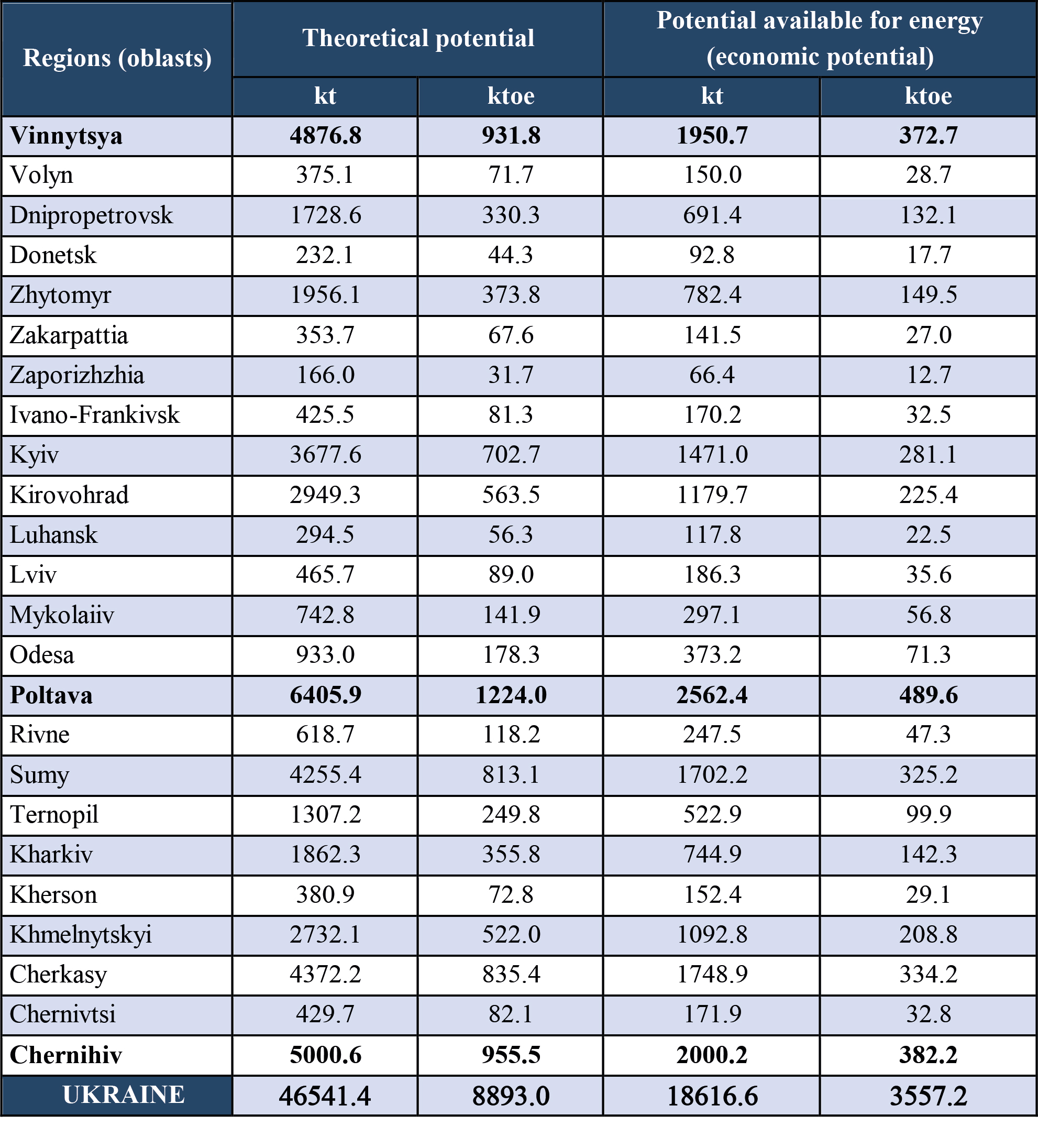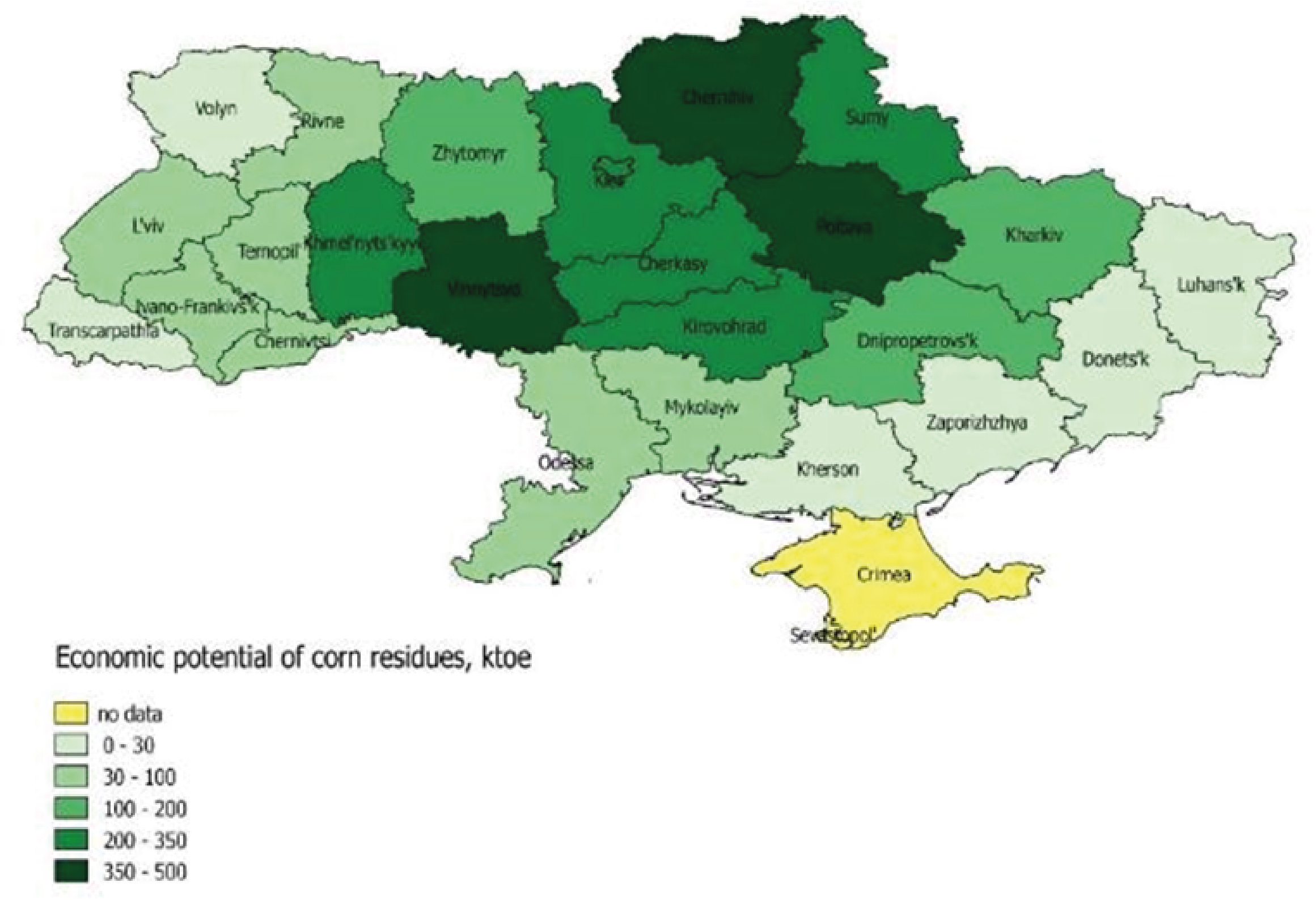Assessment of the corn residues potential for energy in 2018 based on the approach developed by the Bioenergy Association of Ukraine[1] shows the following results (Table 1, Fig. 1):
- the theoretic potential (the whole amount of residues generated) is 46.5 Mt or 8.9 Mtoe;
- the economic potential (the amount available for energy that is 40% of the theoretical potential) is 6 Mt or 3.6 Mtoe including stalks – 9.7 Mt (1.9 Mtoe) and cobs – 3.3 Mt (0.6 Mtoe).
Table 1. Potential of corn residues in Ukraine (2018).

Distribution of the corn residues potential over Ukraine’s territory is not even. Regions with the highest concentration of this type of biomass are oblasts with the biggest production volumes of grain corn. For 2018, they are Poltava oblast (with the economic potential of corn residues 489.6 ktoe in 2018), Chernihiv oblast (382.2 ktoe in 2018) and Vinnytsia oblast (372.2 ktoe in 2018) (Fig. 1).

Fig. 1 Potential of corn residues in Ukraine’s regions (2018).
By 2030, one can expect an increase in the potential of corn residues available for energy in Ukraine by up to 19.2 Mt/yr or 3.7 Mtoe/yr. This is because the yield of corn in Ukraine was much lower than the best indexes of European countries up to 2017 (Table 2). Last year the average yield of corn was reached 78.4 centners/ha in Ukraine. Taking into account current positive dynamics of the development of agriculture in the country, during next 10 years, Ukraine most probably will reach European levels of corn yield.
Table 2. The yield of grain corn in some European countries[2] and in Ukraine[3].

Authors: Tetiana Zheliezna, Semen Drahniev
[1] UABio’s Position Paper N 7 “Prospects for the use of agricultural residues for energy production in Ukraine” (2014) http://uabio.org/img/files/docs/Position-paper-UABIO-7-EN.pdf
[2] FAO statistics http://www.fao.org/faostat/en/#data/QC
[3] Crop production in Ukraine 2018. Statistical Yearbook by the State Statistics Service of Ukraine, 2019 http://www.ukrstat.gov.ua/
Read also:
State of the art of corn production in the world and in Ukraine
Сorn residues and harvesting in Ukraine